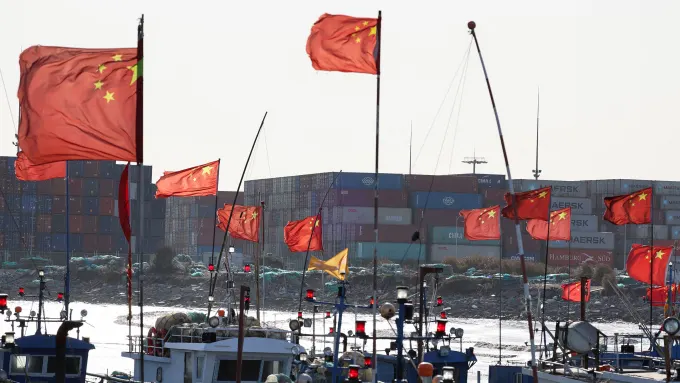The US-China trade war, which began as a broad effort by former President Donald Trump to challenge global trade imbalances, has now narrowed to a heated battle between the world’s two largest economies. With no clear end in sight, Beijing is showing no signs of backing down.
The Escalating Tariffs: A Deepening Economic Confrontation
In early April 2025, President Trump temporarily paused tariffs on Chinese imports—but only after they had already been imposed. By mid-week, China retaliated with its own set of tariffs, marking the beginning of a dramatic escalation. The tariffs on Chinese goods have skyrocketed from 54% to 125%, while China increased retaliatory tariffs on US imports to 84%.
This rapid escalation has turned what was once a broad, multi-country trade dispute into a focused, high-stakes economic war between the US and China. The fallout could dismantle the decades-old trade relationship between the two countries and reshape global markets.
China’s Relentless Stance: No Capitulation
For China, the decision to stand firm is clear. President Xi Jinping has long been preparing for economic battles with the US, knowing that the trade conflict could intensify at any moment. Beijing views US actions as “unilateral bullying” and is determined not to back down. While President Trump has demanded a deal, Xi’s government has framed the escalating tariffs as a necessary defense of China’s sovereignty and economic interests.
Jacob Gunter, lead economy analyst at MERICS, suggests that China has accepted the reality of a protracted economic struggle with the US. “Xi Jinping has made it clear that China will fight back, and they are prepared for a long-term struggle,” Gunter says.
The Economic Fallout: US and China Both Face Risks
As the tariff war intensifies, both economies face severe consequences. The US risks higher consumer prices as tariffs on Chinese goods drive up costs for American consumers. According to some estimates, US imports from China could be reduced by more than half, leading to an $860 billion tax hike on American households.
On the other hand, China’s manufacturing sector, which relies heavily on exports to the US, could see millions of jobs lost, and many suppliers may go bankrupt. However, China’s leaders are confident in their ability to weather the storm. China’s Communist Party, insulated from voter backlash, can afford to sustain economic pain longer than the US, according to experts like Victor Shih from the University of California.
China’s Long-Term Strategy: Preparing for the Worst
China’s resilience in this trade war is not accidental. For years, Beijing has been diversifying its trade relationships and reducing dependence on US exports. China has expanded its partnerships with European and Southeast Asian countries, positioning itself to withstand economic pressure from the US.
China’s manufacturers have also established operations in third countries like Vietnam, Cambodia, and others, circumventing tariffs and ensuring continued access to global markets. This strategic shift allows China to mitigate the impact of US tariffs while strengthening its position on the world stage.
Will the US Back Down?
With both sides deeply entrenched in their positions, the path to de-escalation appears increasingly uncertain. While President Trump has demanded that China make concessions, Beijing is determined to defend its economic sovereignty. As the US and China continue their economic battle, experts agree that Beijing is unlikely to back down any time soon.
Scott Kennedy, senior adviser at the Center for Strategic and International Studies, suggests that China’s long-term strategy will outlast the US’s efforts to force a quick resolution. “The US is not going to be able to, on its own, bring China’s economy to the edge of destruction,” Kennedy explains.
The Road Ahead: A Trade War with No End in Sight
The future of US-China trade relations remains precarious. Both sides are locked in an economic war of attrition, with no clear victor in sight. As China strengthens its global alliances and continues to develop its manufacturing capabilities, it seems poised to endure this conflict for the long haul.
Ultimately, the fate of the US-China trade war will depend on who can outlast the other. With Beijing unwilling to concede and Trump’s administration standing firm, the trade escalation shows no signs of slowing down. For now, both nations remain locked in an intense economic rivalry that will likely shape global trade dynamics for years to come.
Key Takeaways:
• No End in Sight: The US-China trade war continues to escalate with tariffs reaching 125% on Chinese goods.
• Beijing’s Strategy: China is determined not to back down, leveraging long-term preparations to weather the storm.
• Economic Fallout: Both the US and China face significant economic risks, including higher consumer prices and potential job losses.
• Resilient China: China has strategically diversified its trade relationships, positioning itself to endure the conflict longer than the US.

















